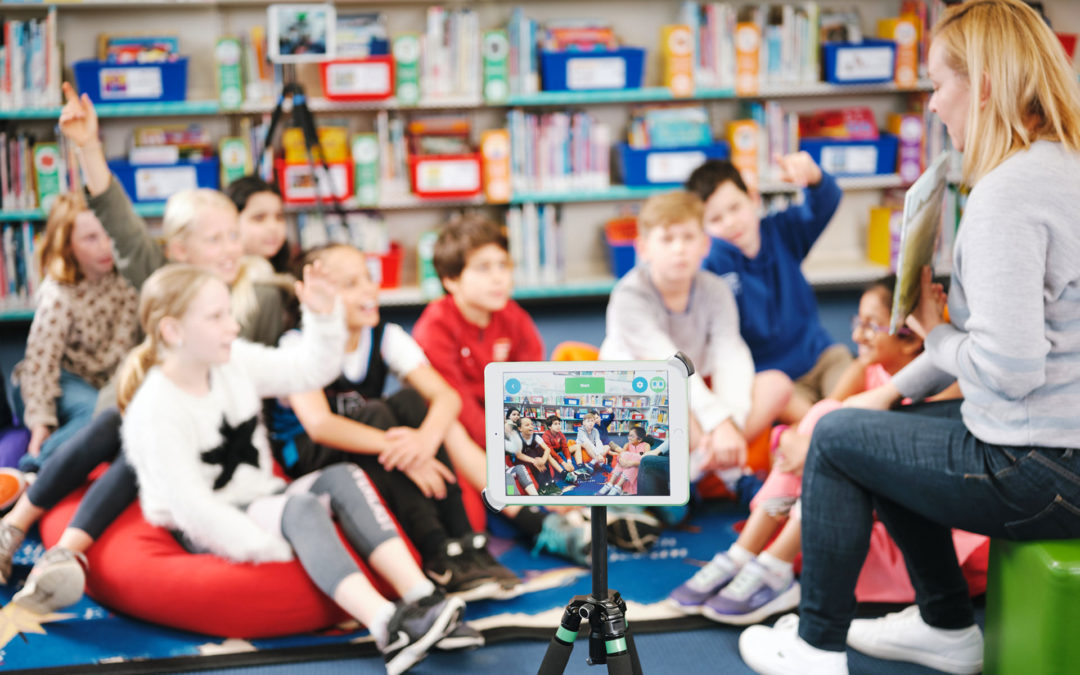Guest blog from Stephen Campbell (@SJM_Campbell), Head of English at Kingswood School
Of all of the assessments and measures that are applied to teachers, lesson observation is perhaps the one aspect that has come under the most scrutiny over the last few years. The grading of lessons has been phased out as significant people have demonstrated its flaws.
As the Head of English at an Independent School, I have been fortunate in the extreme to have had both a team around me, and a supportive leadership team. This circumstance has allowed my department to work through a suitable approach to lesson observation that we feel works well and satisfies our shared intentions behind the process.
As an extension of this, I would like the opportunity to share the processes that we have been through, both to prompt similar discussions in similar departments, but also to open a dialogue and to have the opportunity to receive some helpful and supportive criticism.
I appreciate that we are on a journey and that we haven’t got everything right so far, but I am keen to improve and develop this approach.
Establishing a purpose
The first, and perhaps most important phase in establishing the purpose of lesson observation was to link it to PLD, by which I mean the opportunity to improve teaching. This is a lofty ideal, and one that is fraught with open questions, but I hope that the rationale for this becomes clear.
Our early thinking was focused on delivering PLD that allowed us to improve student outcomes. The idea of conducting our own research in a modest-sized department made up entirely of teachers seemed a little daunting, not to mention ethically questionable. However, the 2015 Teacher Development Trust (TDT) review into ‘What Makes Great Teaching’ suggests that by simply considering lesson content and structure, there is a clear improvement to student outcomes.
Choosing a focus
Buoyed by the idea that thinking about getting better would make us get better, we set about designing a supportive structure around which to build a process of observations. We borrowed heavily from the ideas behind Lesson Study, which allowed us to consider observation as part of a fluid, collaborative process.
We also took the decision to focus on one aspect of teaching that would form part of this cycle of observation, in order to narrow the focus. Whilst there are some who question the validity of considering feedback, we felt that the Education Endowment Foundation (EEF) research into feedback provided us with a good starting point when deciding on a focus.
So, we had a focus – feedback – and the confidence to do some shared planning and evaluation. As mentioned earlier, I was hugely fortunate to be part of a team of teachers who wanted to improve, and this culture was absolutely key to the following stages.
Stumbling blocks
The barrier that we were facing as we started to plan and observe our shared lessons was the loss of replicability.
It has always been important to us that we could learn something concrete from an observation that we might be able to weave into our own teaching, yet the process that we were going through meant that the actual teaching phase was not stored or shared outside of those key observers.
Discovering video
By happy chance, my school had just invested in an IRIS Connect Discovery Kit; quickly, we requested and received training in its use. Again, I was keen to understand the empirical support behind the implementation of video recording software, having been subjected to it in a negative way during my post-graduate study.
A report from the EEF clearly states the benefits that such a process can have on improving teaching, and, crucially, on improving student outcomes.
Again, this research allowed me to present IRIS Connect to my department with confidence, as they trusted that there was a clear reason for using it.
What we achieved
The current situation, then, is that we now have a growing bank of short clips of activities or tasks that are focused on delivering high quality feedback experiences to students in the classroom. These range from whole class feedback to comparative judgement; from peer assessment strategies to guided learning tasks.
Crucially, these clips are safely stored somewhere that means that we can all access them through our IRIS Connect accounts, and they have been ‘vetted,’ or selected by peer observers as examples of effective teaching. Whilst we are not necessarily expert teachers yet, we all know what effective teaching looks like and I am confident in trusting my team to filter out examples of best practice.
IRIS Connect allows us to edit and comment on these clips, which means that I can see a teacher doing something and read about what is working and why from other members of the department. I am also able to see the resources used and really understand how to take each example and apply them to my own teaching.
The most valuable use of this has come through our end of year examination feedback. I asked the department to refrain from really marking scripts at all, in the traditional way of ‘marking’. Instead, I asked them to focus on the quality of the feedback given, which was to be built around the whole class re-teaching common mistakes or errors.
I was able to direct them all to several examples of what this looked like, as demonstrated by teachers they know and trust, along with comments and resources. This ensured that the quality of feedback that students received after their examinations was of the very highest.
Final thoughts
I am really proud of my department for the way that they have worked on this process. It is wonderful to be a part of a team that is looking at improving their teaching every single day.

